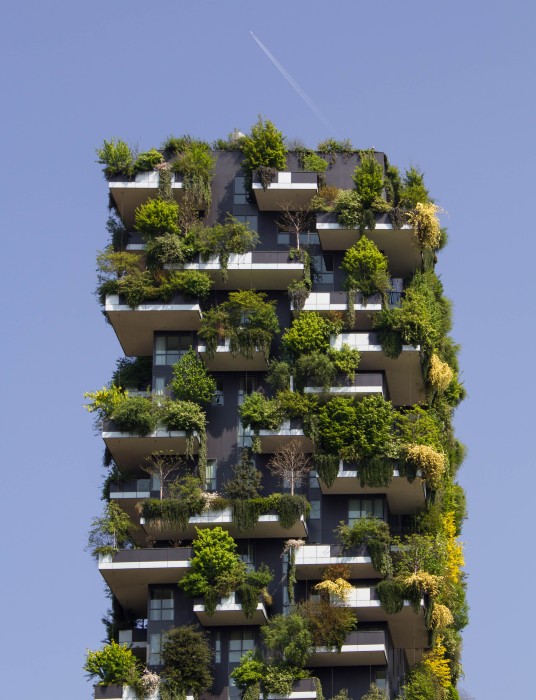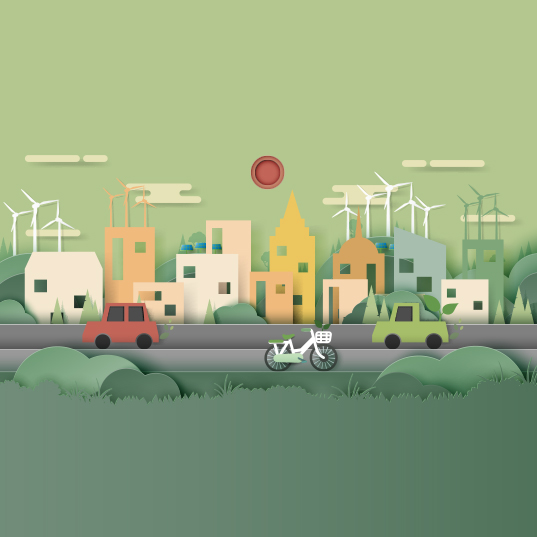“The crisis of the overgrown city is the other side of the crisis of the natural world,” writes Italo Calvino in Invisible Cities. Truer words were never spoken, but the Italian author wanted us to go on to treat these spaces differently. Rapid urban expansion has usually surged ahead at the expense of surrounding biodiversity, polluting water and air, and without any reference to principles of equality or social justice. There’s still time to change this, though, since the places and live in can, and must, transform themselves into sustainable cities and communities.
What will I learn from this article?
- What is a sustainable city?
- Present challenges faced by cities
- How do we build sustainable cities and communities?
What is a sustainable city?
The sustainable city is a living space built to protect the environment, defend social justice, and promote inclusive economic development which doesn’t leave anyone behind.
“The sustainable city is a living space built to protect the environment, defend social justice and promote inclusive economic development”
Until now, urban spaces are places that have impacted heavily on the planet. But they also have great potential to solve the problems people face today: climate change, pollution, inequality, etc.
Sustainable cities and communities can help us progress toward achieving the 2030 Agenda and accomplish the Paris Agreement. To do so, they need to be designed - or redesigned – so as to use resources responsibly and transform themselves into more resilient, inclusive and fairer places.
Present challenges faced by cities
Air quality is currently the biggest environmental risk to health in cities. Although cities only cover 2% of the Earth, they are responsible for around 70% of the total emissions generated by human activity.
Worldwide, poor air quality contributes to between 6 and 7 million premature deaths per year. So, reducing pollution is fundamental.
“Although cities only cover 2% of the Earth, they are responsible for around 70% of global emissions”
 Degradation of and loss of biodiversity is another of the big problems cities face and is directly related to people’s quality of life. Biodiversity provides a multitude of benefits for humans, from ecosystem services to natural resources.
Degradation of and loss of biodiversity is another of the big problems cities face and is directly related to people’s quality of life. Biodiversity provides a multitude of benefits for humans, from ecosystem services to natural resources.
For example, if pollinating insect species decline – as in the case of bees – agricultural productivity falls and consequently food insecurity increases. In the same way, if there are a lot of trees and vegetation in urban spaces, it will significantly reduce pollution.
Another challenge lies in the construction of resilient infrastructure and buildings, which help to mitigate the effects of climate change. The risk of flooding of urban land in coastal areas is forecast to be 40% greater in 2030. And, by the end of the century, rising sea levels – including in a low-emission scenario – will endanger the wellbeing of 200 million people who presently live in areas below the water level.
How do we build sustainable cities and communities?
Sustainable cities and communities have the potential to transform the current rate of climate change, biodiversity loss and social stress.They can catalyze transformation through innovation, education, employment, the economy, entertainment and cultural interaction.
This is the moment to reimagine, redesign, remake and rebuild these spaces in a way that contributes to social justice and inclusion, as well as environmental sustainability, resilience and mitigation of climate change.
Indeed, the report, Global Environmental Outlook for Cities: Towards Green and Just Cities, identifies the measures we need to take to achieve these changes.
The report, prepared by the United Nations Environment Programme (UNEP) and the United Nations Human Settlements Programme (UN-Habitat), describes three ways in which we can transform cities to become part of the solution rather than the problem:
A zero-emission circular city
Most greenhouse gases we emit to the atmosphere come from the production of goods we consume, or from transport. As such, one of the main objectives UNEP and UN-Habitat put forward is to transform the systems of production, significantly reducing natural resource extraction and other forms of pollution and waste, through the circular economy. The following will be essential to achieve this:
- Reuse and recycling of waste to transform it into new materials.
- Maximization of renewable energies and efficient use of water and energy.
- Buildings in sustainable cities and communities need to be designed according to high energy efficiency and heat insulation criteria, with green walls and roofs.
- Installation of solar panels on rooftops.
- Construction of wind farms on the outskirts of cities as a source of renewable energy and sustainable jobs.
Resilient, sustainable cities
Climate change is already a reality we have to adapt to. For this, it’s essential the new model city can count upon construction and spaces that protect communities and vulnerable urban locations from environmental degradation, the impacts of global warming and extreme weather events. What does the report on sustainable cities and communities recommend?
- Measures to protect farmland, woods and wildlife habitats on the edge of the city.
- Promote the use of public transport and electric vehicles.
- Guarantee a quality transport network linking workplaces with residential districts, civic spaces, health centers, schools and shopping areas. This will contribute to the 15-minute cities objective described in Paris, which aims to reduce travel time for daily errands to a quarter of an hour.
- Promote non-motorized mobility (walking and cycling) by expanding pedestrianized streets and cycle lanes. Other measures it proposes include safe, attractive paths and routes to promote physical and activities and healthy people.
- Establish local plans for climate adaptation and recovery from natural disasters, as well as developing local capacities for implementing these plans, helping to create mutual support networks in the case of extreme events.
- Introduce specific assistance programs to support social groups and marginalized communities, including women, ethnic and religious minorities, people with disabilities, children and youth, elderly people and migrants and refugees, through the construction of inclusive mechanisms.
Inclusive and just cities and communities
 The points mentioned above will serve for little if we don’t include everyone, without leaving anyone behind, or protect the most vulnerable. New models of sustainable cities and communities need to involve citizens, urban natural spaces and biodiversity in their institutional and governmental decision-making processes.
The points mentioned above will serve for little if we don’t include everyone, without leaving anyone behind, or protect the most vulnerable. New models of sustainable cities and communities need to involve citizens, urban natural spaces and biodiversity in their institutional and governmental decision-making processes.
- Inclusive urban development: plan cities and the use of land while taking into account the diversity of their populations and make them accessible for people with disabilities.
- Fair distribution of climate investments: climate change impacts on a global level, but affects impoverished, vulnerable communities first and worst.
- Positive nature strategies: protecting spaces with high biodiversity from urban expansion, and prioritizing the efficient use of metropolitan land in order to minimize the loss of wild areas.
Let’s end this article with another quote from the same book by Italo Calvino, who wrote: “The city… does not tell its past, but contains it like the lines of a hand, written in the corners of the streets, the gratings of the windows, the banisters of the steps, the antennae of the lightning roads, the poles of the flags, every segment marked in turn with scratches, indentations, scrolls.”
While the city cannot speak of its past, through its citizens the city can determine its future and how we can advance toward an urban transformation that protects the environment and people, and guarantees us a sustainable tomorrow.
Sources:
https://unhabitat.org/sites/default/files/2021/11/geocities_updated.pdf
https://www.sostenibilidad.com/construccion-y-urbanismo/ciudad-futuro-desarrollo-urbano-sostenible/